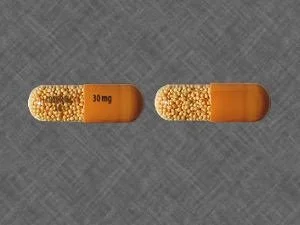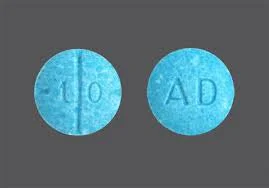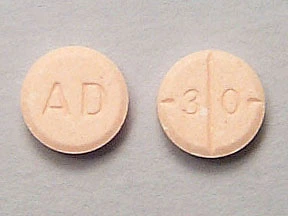Description
The trademarked medication Adderall XR 30 mg is made from two salts, such as amphetamine and dextroamphetamine. These two function as stimulants of the central nervous system, which enhance brain activity.
The US FDA has approved the use of the medication to treat Attention Deficit Hyperactivity Disorder, or ADHD, a behavioral issue. It primarily affects youngsters and persists throughout adulthood.
This medication is intended to treat symptoms such as emotional instability, irresponsibility, disorientation, and lack of attention. The rectangular form and orange hue of the capsule help to identify it. On the opposite side of the capsule, the name and strength of the medication are imprinted.
It is classified as a Schedule II restricted substance because of its significant potential for abuse or overuse. Depending on the patient’s age, the medication’s half-life ranges from 9 to 10 hours.
How Does Adderall XR 30 mg Work?
It aids in increasing neurotransmitter concentration. Dopamine, serotonin, and norepinephrine, for example, are crucial for controlling the brain’s functions such as memory, learning, and focus.
The medication aids in stopping these neurotransmitters from being reabsorbed. By boosting attentiveness, this raises their levels in the brain and helps patients with ADHD have fewer symptoms.
Dose & Dosage Strength:
The medication Adderall comes in two forms:
- Oral tablet in immediate-release form
- Form with Extended Release (oral pill)
An extended-release medication is Adderall XR 30 mg. The additional dose strengths for XR are:
- Adderall XR 5 mg
- Adderall XR 10 mg
- Adderall XR 15 mg
- Adderall XR 20 mg
- Adderall XR 25 mg
A doctor determines the dosage after assessing the patient’s age, the severity of their conditions, etc.
Dosage for Children (between 6 to 17 years)
Starting at 10 mg, a nominal dose can go up to 30 mg.
Dosage for Adults
The starting minimum dosage for adults is 20 mg.
Uses of 30 mg Adderall XR:
The medication is used as
ADHD (Attention Deficit Hyperactivity Disorder): This mental illness that impacts a patient’s behavior, focus, and other aspects of their life is treated with medication. By improving focus and controlling emotions, the medication helps to reduce these symptoms.
Side Effects:
The medication has some side effects that can differ from person to person. These are as follows:
Common Side Effects-
- Dry mouth
- Difficulty in sleeping
- Headache
- Rapid heartbeat
- Decreased body mass
- Abdominal pain
- Nausea
- Decreased desire to eat
- Feeling faint
- Loose stools
- Restlessness
Severe Side Effects
- Discoloration of the skin
- Palpitation
- Less clarity in vision
- Suicidal Ideation
- Infection in the urinary tract
- Hallucination overcome
- Stiffness in the muscles
- The feeling of sadness (depression)
- Allergic reactions
- High body temperature
- Weak muscle strength
- Lack of coordination
- Mood and behavioral changes
- Numbness
- Achiness in the muscles
Precautions:
Before and during treatment, the patient must adhere to certain safety precautions. These are as follows:
- Before beginning treatment, it will be beneficial for the patient to share their medical history.
- Steer clear of alcohol when taking medication.
- Take this medication after speaking with your physician.
- Avoid stopping the medication suddenly as this may cause withdrawal symptoms in the patient.
- Avoid taking this medication concurrently with other medications as this could result in drug interactions.




Daniel Reed –
Very reliable pharmacy with genuine products. I’ve had a great experience every time I ordered.